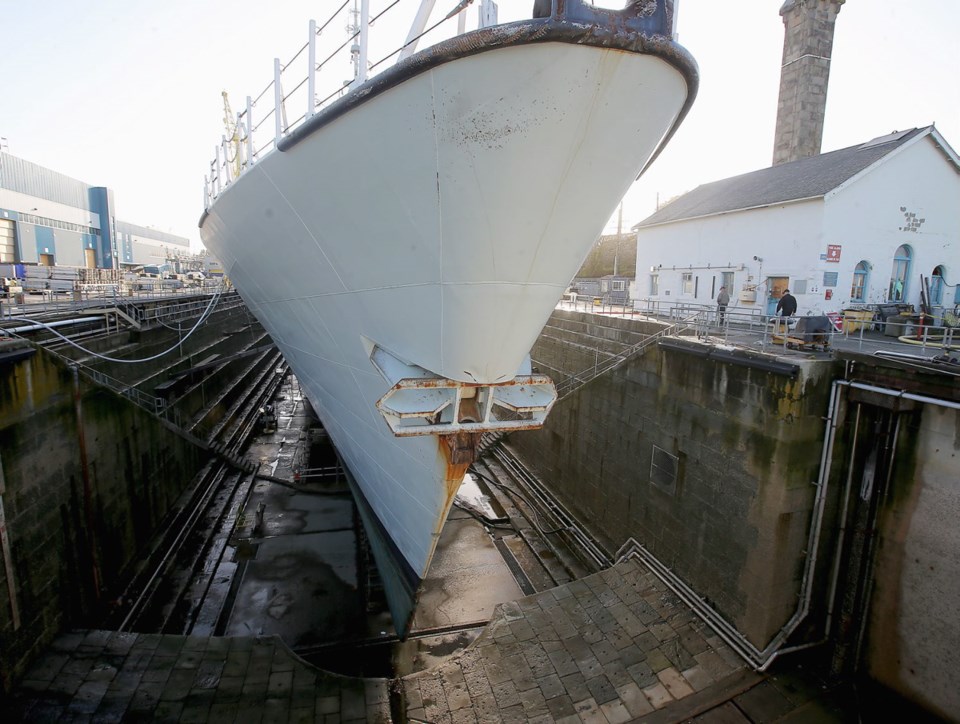HMCS Calgary has undergone a change in command just months before the warship is to begin a tour of the Asia-Pacific region.
The navy says the highly unusual moves are unrelated, despite coming within only a few days of each other. They nonetheless come at a critical time for the crew of HMCS Calgary, which is at CFB Esquimalt, B.C., and will head overseas in April for three months.
Cmdr. Jonathan Kouwenberg was removed as HMCS Calgary's skipper on Jan. 20 after it was determined that despite months of training, the crew was not as ready for its mission as it should have been, according to Commodore Angus Topshee, commander of Canadian Fleet Pacific.
Kouwenberg, who took command of HMCS Calgary in June, has been replaced by Cmdr. Alex Barlow, who recently returned from a similar mission in the Pacific as commanding officer of another frigate, HMCS Ottawa.
Dubeau said senior officers decided a change in the ship’s leadership was necessary to reach performance levels required during overseas deployment.
HMCS Calgary’s second-in-command, Lt.-Cmdr. John Forbes, was also relieved of duty after disabling a smoke detector in the wardroom, smoking tobacco and encouraging assembled subordinates to do likewise while the ship was in San Diego. The officer was found guilty of three counts of behaviour contrary to good order and discipline and fined $3,000.
HMCS Calgary, one of five frigates based in Esquimalt with Maritime Forces Pacific, is being prepared for deployment to the Asia-Pacific region this spring.
HMCS Ottawa spent 46 days enforcing UN sanctions against North Korea, observing nine potentially illicit ship-to-ship transfers and helping intercept 13 vessels of interest.
It also sailed through the Taiwan Strait, much to China's annoyance because China considers the waterway its own internal waters. Chinese warships and aircraft shadowed and buzzed another Canadian frigate, HMCS Regina, when it passed through the strait in June.
HMCS Calgary is expected to conduct similar operations.
"The well-being of any ship's crew is paramount to operational success, particularly when a ship is preparing to deploy," Topshee said in a statement Friday.
"The commanding officer therefore plays an integral and critical role in helping to ensure the morale and resilience of sailors on board, and this, along with ensuring HMCS Calgary's operational readiness, will be among Cmdr. Barlow's top priorities."
Kouwenberg remains in the Canadian Armed Forces, and Topshee said no disciplinary action was required.
Forbes' actions "violated the trust placed upon him by the Royal Canadian Navy as a member of HMCS Calgary's command team," Topshee said. "By virtue of his rank and position on board the ship, his actions encouraged subordinate officers to act against well-established rules."
Topshee played down any impact the changes will have the frigate's mission, but acknowledged: "In terms of morale and stability, there will be a period of transition.
"Building up morale and establishing trust between the command team and crew is therefore of the utmost importance during this time, and one of the top priorities of the incoming commanding officer."
Canadian Navy officials have said these overseas deployments, lasting about six month each, are meant to demonstrate and affirm Canada’s presence in the Pacific and its ongoing commitment to its allies.
During exercises such as the ongoing Operation Projection, Canadian Navy ships work with their counterparts from other Pacific nations, including Japan, South Korea, New Zealand, Australia and the U.S.
In the past, deployments have included goodwill visits to foreign ports, emergency disaster assistance and enforcing the United Nations embargo of North Korea.



